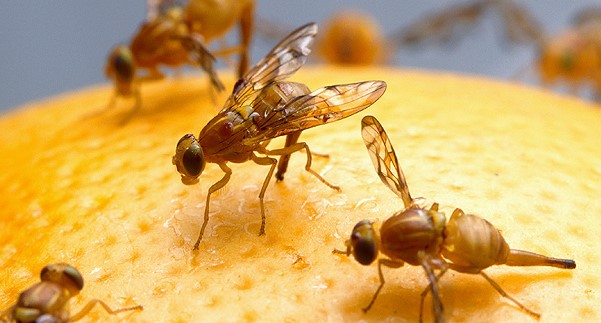
The Brownsville and Harlingen Mexican fruit fly quarantine areas have been significantly extended after traps indicated the destructive citrus pests are moving closer to the edges of the current zones.
The decision by the U.S. Department of Agriculture’s Animal and Plant Health Inspection Service, known as APHIS, means the Brownsville residential area has practically doubled, while the Harlingen zone has expanded by 20 percent.
The commercial zones in the quarantine areas where citrus is grown for sale also increased.
“Between June 25 and July 14, 2021, APHIS confirmed the detections of 87 adult Mexflies in Brownsville and Harlingen,” a statement by the agency reads. “Although the detections were within the Brownsville and Harlingen quarantines, some detections were close enough to the perimeters of the quarantines to trigger expansion of the quarantines.”
The Brownsville quarantine expanded from 229 square miles with 888 acres of commercial citrus to approximately 446 square miles with 1,412 acres of commercial citrus. This expansion of the Brownsville quarantine is approximately 217 square miles with 524 acres of commercial citrus.
The Harlingen quarantine expanded from 192 square miles with 2,079 acres of commercial citrus to approximately 231 square miles with 2,095 acres of commercial citrus. This expansion of the Harlingen quarantine consists of 39 square miles with 16 acres of commercial citrus.
APHIS and the Texas Department of Agriculture established the original Cameron County quarantine following the detections in early 2020 of 80 adult Mexflies and 14 Mexfly larval sites in citrus from various residential areas and two commercial groves.
The intent of the quarantine is to restrict interstate movement of citrus from the quarantine zones to help stop the spread of Mexflies to non-infested areas of the United States.
The Mexican fruit fly (Anastrepha ludens) is a major threat to a number of varieties of fruit, but is particularly dangerous to citrus and mango.
The fly was first cataloged in central Mexico in 1863, and by the early 1950s they were found on the California-Mexico border and later in Arizona, California and Texas.
At-risk commercial crops from Mexfly infestations include avocado, grapefruit, orange, peach and pear.
Adult fruit flies, which are larger than a house fly, are pale orange-yellow with two to three whitish stripes along the thorax. The wings are clear with several yellow and brown stripes.




